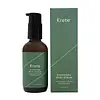What's inside
What's inside
 Key Ingredients
Key Ingredients

 Benefits
Benefits

 Concerns
Concerns

No concerns
 Ingredients Side-by-side
Ingredients Side-by-side

Ethylhexyl Palmitate
EmollientC15-19 Alkane
SolventSqualane
EmollientCaprylic/Capric Triglyceride
MaskingGoat Milk
Skin ConditioningColostrum
Skin ConditioningBifida Ferment Lysate
Skin ConditioningLactose
HumectantMilk Protein
Skin ConditioningCeramide NP
Skin ConditioningAloe Barbadensis Leaf Juice
Skin ConditioningSymphytum Officinale Rhizome/Root Extract
Skin ConditioningCitrus Unshiu Peel Extract
MaskingChamomilla Recutita Flower Extract
MaskingEryngium Alpinum Flower Extract
Skin ConditioningHoney
HumectantCucumis Sativus Fruit Extract
EmollientBiotin
AntiseborrhoeicWhey Protein
Skin Conditioning1,2-Hexanediol
Skin ConditioningCaprylyl Glycol
EmollientGlyceryl Oleate Citrate
EmulsifyingGlycerin
HumectantPolyglyceryl-10 Stearate
Skin ConditioningHydrogenated Lecithin
EmulsifyingSucrose Stearate
EmollientC10-18 Triglycerides
EmollientLecithin
EmollientCitric Acid
BufferingPotassium Sorbate
PreservativeSodium Citrate
BufferingSodium Benzoate
MaskingPhenoxyethanol
PreservativeEthylhexyl Palmitate, C15-19 Alkane, Squalane, Caprylic/Capric Triglyceride, Goat Milk, Colostrum, Bifida Ferment Lysate, Lactose, Milk Protein, Ceramide NP, Aloe Barbadensis Leaf Juice, Symphytum Officinale Rhizome/Root Extract, Citrus Unshiu Peel Extract, Chamomilla Recutita Flower Extract, Eryngium Alpinum Flower Extract, Honey, Cucumis Sativus Fruit Extract, Biotin, Whey Protein, 1,2-Hexanediol, Caprylyl Glycol, Glyceryl Oleate Citrate, Glycerin, Polyglyceryl-10 Stearate, Hydrogenated Lecithin, Sucrose Stearate, C10-18 Triglycerides, Lecithin, Citric Acid, Potassium Sorbate, Sodium Citrate, Sodium Benzoate, Phenoxyethanol
Alternatives
Ingredients Explained
These ingredients are found in both products.
Ingredients higher up in an ingredient list are typically present in a larger amount.
Glycerin is already naturally found in your skin. It helps moisturize and protect your skin.
A study from 2016 found glycerin to be more effective as a humectant than AHAs and hyaluronic acid.
As a humectant, it helps the skin stay hydrated by pulling moisture to your skin. The low molecular weight of glycerin allows it to pull moisture into the deeper layers of your skin.
Hydrated skin improves your skin barrier; Your skin barrier helps protect against irritants and bacteria.
Glycerin has also been found to have antimicrobial and antiviral properties. Due to these properties, glycerin is often used in wound and burn treatments.
In cosmetics, glycerin is usually derived from plants such as soybean or palm. However, it can also be sourced from animals, such as tallow or animal fat.
This ingredient is organic, colorless, odorless, and non-toxic.
Glycerin is the name for this ingredient in American English. British English uses Glycerol/Glycerine.
Learn more about GlycerinPhenoxyethanol is a preservative that has germicide, antimicrobial, and aromatic properties. Studies show that phenoxyethanol can prevent microbial growth. By itself, it has a scent that is similar to that of a rose.
It's often used in formulations along with Caprylyl Glycol to preserve the shelf life of products.